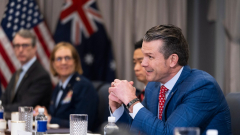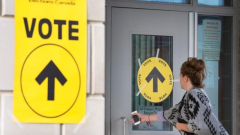PM Albanese says government already increasing spending and decisions will be based on defence capability needs.
United States Defense Secretary Peter Hegseth has called on Australia to increase its military spending to 3.5 percent of gross domestic product (GDP) “as soon as possible”.
Responding on Monday, Prime Minister Anthony Albanese said the government will decide on Australia’s defence capability needs before announcing spending.
“What you should do in defence is decide what you need, your capability, and then provide for it,” Albanese told reporters.
“That’s what my government is doing. Investing to our capability and investing in our relationships.”
Albanese added that his government is already increasing defence spending by about 10 billion Australian dollars ($6.5bn).
“We’re continuing to lift up,” he said, citing his government’s goal to increase spending to 2.3 percent of GDP by 2033.
However, the government is facing other demands on its budget.
Albanese was speaking from a farm in the state of South Australia, which is experiencing a significant drought.
Meanwhile, Australia’s treasurer said the country is facing a bill of billions due to recent floods in New South Wales and Cyclone Alfred.
Public broadcaster ABC reported that increasing military spending to 3.5 percent of GDP would cost 100 billion Australian dollars ($65bn) annually, 40 billion Australian dollars ($25bn) more than it spends currently.
Matt Grudnoff, a senior economist with The Australia Institute, said “Australia already spends more than it should” on defence.
“Were Australia to increase its defence spending to 2.3% of GDP, we would be the ninth biggest spender on defence and the military,” Grudnoff said.
“Australia would be devoting more of its economy to defence than France and Taiwan, and on a par with the United Kingdom,” he added.
Worldwide military spending increased by 9.4 percent in 2024, the sharpest rise since the end of the Cold War, in part driven by increased spending by European countries, according to the Stockholm International Peace Research Institute (SIPRI).

The Australian government has already committed to spending hundreds of billions of dollars on US-manufactured nuclear submarines under its AUKUS





